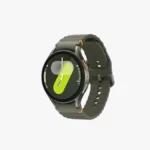A reliable mid-range work notebook, the Lenovo ThinkPad X1 Carbon Gen 10 is slightly overpriced considering what you receive.
While it can’t be a proper gaming laptop, it can handle numerous professional projects without making you less productive. It also has excellent speakers for a business laptop, little bloatware, a quick keyboard, and long battery life.
For businesses seeking to make informed technology decisions but needing more preparation to provide their staff with expensive mobile workspaces, the Lenovo ThinkPad X1 Carbon Gen 10 is a superbly promoted device.
Although it could imply that this is a more reasonably priced machine, it’s still a substantial sum of money to spend on machinery that could be damaged by negligent treatment.
Whereas the prior Lenovo ThinkPad X1 Carbon and its predecessor shared many similarities, this hardware is essentially a brand-new system with every component upgraded or replaced.
However, the 720p webcam is inferior, the display may be better, and more USB ports must be needed. Despite its advantages, the ThinkPad X1 Carbon Gen 10 is difficult to market due to these flaws and the expensive price. We’ll explain why in this review so you can choose if this is the appropriate product for you.
Price and Availability
Until you realize that the X1 Carbon’s base pricing is for a device with a Core-i5 class processing, 16GB of RAM, an IPS screen with quality of 1920×1200, and no 5G capability, the cost sounds logical.
To purchase the hardware described in our review would cost more than twice that, or £3,023.99 in the UK and $2,330 in the USA. The CPU in the evaluation hardware is only available with 16GB of RAM in the US. Selecting the i7-1270P or higher is a peculiarity of the US SKUs.
It’s also important to note that although the 4K display and the i7-1280P vPro CPU are possibilities in other locations, they are currently out of stock in the UK.
Overall, if every checkbox is checked, this laptop may cost a lot of money.
Pros
- Elegant design
- Strong processors
- Ports for Thunderbolt 4
- Beautiful display
Cons
- Costly
- More battery life was required.
- Assembled memory
Is it Looks Stylish?
As you age, taking up a laptop from the corner may cause your wrist joint to ponder, denying the possibility of supporting that pull.
The ThinkPad X1 Carbon Gen 11 is the ideal laptop for those who have gone through that; it weighs just 1.12 kg and is composed of a surprisingly stiff blend of carbon fiber and magnesium.
The sole drawback of this manufacturing technique is that the exterior is covered in a rubberized covering that is incredibly porous and difficult to clean off fingerprints. This laptop is quite functional and comes with the majority of the capabilities that anyone looking for a portable system may legitimately want if you can see beyond the list price and the fact that it attracts dust.
This features a great assortment of ports, such as HDMI out, a Nano SIM slot for cellular data services, and a big keyboard with a typing action suitable for extended use.
There isn’t a lot of deviation from the classic ThinkPad playbook, as the top edge of the touchpad features integrated mouse buttons, and a red nub directly above the letter ‘B’ is a standard part common on ThinkPads.
The fact that the power button currently sits just behind the home key and serves as a fingerprint sensor is a minor deviation. Although we don’t particularly like how little and unnoticeable this button is, people can quickly get used to it. The webcam is top-center, has a physical privacy cover, and has better video quality than the one used in the Carbon X1 generation, which is another intriguing design decision.
Unique Features of Lenovo Thinkpad X1
The Carbon X1’s display stands out mainly on the review system. The OLED display on this laptop is beautiful and has lighting uniformity and color accuracy that are unmatched by IPS TFTs.
However, it has a strange resolution of 2880 x 1800, which is excessive for a screen that measures only fourteen inches from corner to corner and has a default scale of 200%. Although a 4K display is available from Lenovo for individuals who want a lot of pixels they won’t be able to view without a magnifying glass, this resolution is overkill. With a total intensity of 400 nits, this panel’s justification may be stronger in brightness. Although it is brighter than many displays that remains below what we would estimate to be the point at which HDR becomes spectacular. Although two 4K IPS models and a WUXGA IPS panel are mentioned as screen possibilities for this design, they can all handle 500 nits of backlighting.
The 5G option, an additional that must be requested at the moment of purchasing, is the other feature deserving of notice. Due to the geographical differences in this technology, distinct 5G/4G LTE modems are offered in regional SKUs. As a result, it’s possible that a device purchased in one country won’t function with such WWAN capabilities in some other region that regional consistency on this issue isn’t guaranteed.
Performance
So now comes to Lenovo ThinkPad X1 Carbon review of performances. Understanding that various major systems affect the results while analyzing benchmarks is essential. Additionally, how they connect can significantly affect the final ratings.
The Intel Core i7-1260P Processor, which has 12 Cores and 16 Threads, is the brains of this system and gives all else attached to it its color. The Core i7-1260P can perform multi-core tasks exceptionally quickly, but it needs to be clarified how it will perform when faced with a single-core challenge.
In some areas, the various SKUs provide processors with even greater specifications, including vPro variants, for individuals who want even more power.
When using the X1 Carbon, we encountered a problem where the system tried to use effective E-cores to extend battery life at the expense of performance. It unlocks the P-cores for performance when plugged into a primary power source. It’s the theory. It confuses its priorities and causes P-cores to consume the battery.
Although the settings can be changed to achieve a better balance, the Lenovo ThinkPad X1 Carbon favors speed over other factors by default. The GPU and the NVMe SSD are two more features of the performance profile, in addition to the incredible variety of threads this system can handle.
Battery Life
As we’ve already noted, the processor in this device needs to work on being designed for functionality above battery life. We got 7 hours and 12 minutes on a full charge using the PCMark 10 Battery Life test, which is not quite a workday. If you need to work extra hard or do something strenuous, that can equate to a working day with comfort breaks and sporadic phone calls.
Fortunately, it has a Lenovo ThinkPad X1 Carbon charger 65W AC Adaptor for USB-C because, at this price, a laptop with dual Thunderbolt ports shouldn’t have a unique PSU.
Any USB-C PSU of 65W or better may charge the X1 Carbon using this port in place of one of the awful pin-barrel sorts, and power can be distributed between it and additional USB-C devices with a simple cable, such those non-Apple phones.
The Carbon X1 should have had a larger battery, but doing so necessitated a compromise that could have been satisfactorily handled in this iteration.
Final Verdict
Whether in the coach or on the couch, the Lenovo ThinkPad X1 Carbon (Gen 10) has practically all the amenities you need to succeed. It features all the necessary connectors, an excellent display, a keyboard that makes working enjoyable, a smart navigation system, and a powerful webcam. The X1 Carbon sports a lightweight chassis and gentle materials, which make it feel fantastic while driving.
However, something needs to be added. The 8 to 9 hours of battery life we observed during our test may be reduced to 6 or 7 hours if you crank the brightness higher than we do. However, you don’t purchase a 2.5-pound laptop like the ThinkPad X1 Carbon to have it plugged in most of the time. The Carbon’s short durability stands out negatively when opponents last 14 hours on the same testing. The slight performance improvement you receive from the more powerful P-series processor simply isn’t worth it. We haven’t tested the U-series CPU, which recently became available, but it could increase durability to the 15 hours that last year’s model achieved.

















